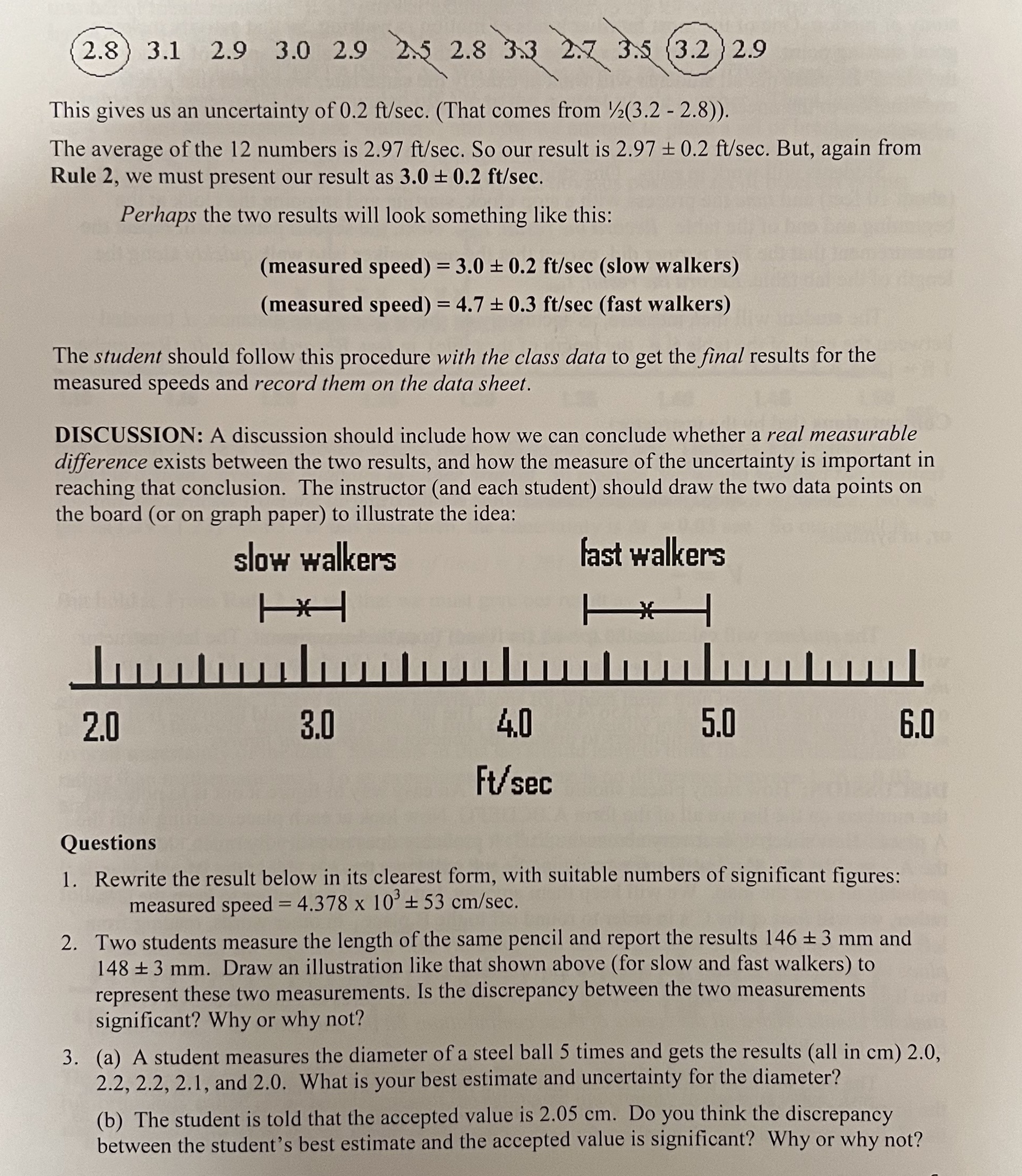Question
The next job is to convert the each list into a final best value uncertainty. At this point, the instructor can show the students a
The next job is to convert the each list into a final best value uncertainty. At this point, the instructor can show the students a shortcut method for doing this. First, the best values are, as usual, the averages of our 12 numbers for each of the two cases (slow and fast). Next, instead of taking the time to draw a histogram, we simply note that 12/6 = 2 and so we eliminate the 2 largest measurements and the 2 smallest measurements. So simply cross out the outer 4 measurements, i.e, the two highest and the two lowest numbers. Of the 8 numbers left, circle the highest and the lowest. These circled numbers become the edges of our brackets, from which we write down the uncertainty. Below is an example, where all numbers are in ft/sec,

Step by Step Solution
There are 3 Steps involved in it
Step: 1

Get Instant Access to Expert-Tailored Solutions
See step-by-step solutions with expert insights and AI powered tools for academic success
Step: 2

Step: 3

Ace Your Homework with AI
Get the answers you need in no time with our AI-driven, step-by-step assistance
Get Started


